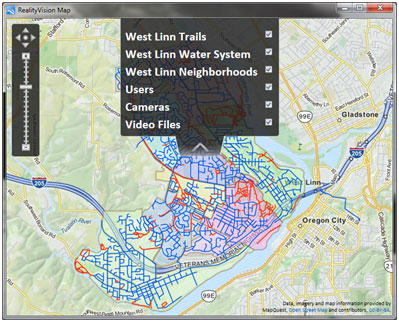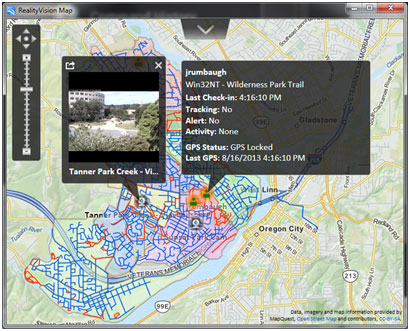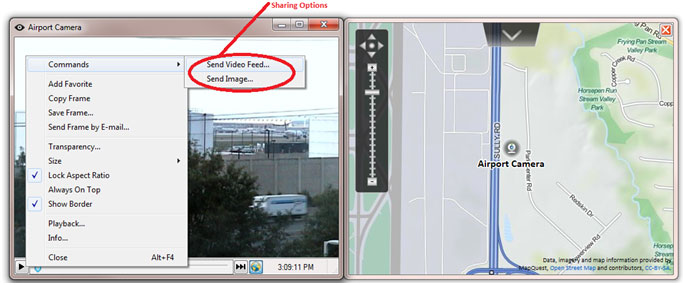

What's New in RealityVision® 3.3?
We are pleased to introduce RealityVision® 3.3
Among other updates, this release introduces an entirely new dimension to the platform, a mapping engine that gives customers the flexibility to share mapping resources privately with their dispersed employees and to customize the experience based on operational requirements. With this release, we are also pleased to extend to our Windows PC users the same patented peer-to-peer video sharing feature now available to our Android, iPhone and iPad users.RealityVision now also supports Windows Server 2012 R2.
Mapping Engine
Location is an increasingly crucial source of visual context as organizations manage widely dispersed personnel and assets. Our mapping engine gives the customer control of which map they want to appear across their user base, gives everyone a common visual reference point regardless of device type and does so securely. The engine is built on open mapping standards, and allows the organization to opt for its own internal map service or an external one as long as the map service is WMTS compliant. For additional details, please see our related guide, RealityVision Mapping Engine: A Closer Look.
The mapping engine also gives the customer discretion to map additional custom data and image overlays for their users to enhance operational context, and makes it very simple for those users to select which layers they need to see. Asset information, incident locations and other geo-referenced operational data can be presented, such as sensor locations and status, shipping data and more. By default the transfer of all map data between the RealityVision user components and the RealityVision server is secure. For organizations where all data must be securely transferred, an internally hosted server is recommended.
All our RealityVision user components have been updated to support the mapping engine to give the user a more informative and interactive experience. This includes the main map displays for our iPad and Management Console components, and the other map displays currently available for our Android, PC and iPhone components when presenting video sources and their associated location information.
To make the integration of your unique data into the RealityVision system as smooth as possible we have created a "Secure Maps Integration Guide" which can be accessed here.
Among other highlights, the updated user experience includes a map layer switcher to manage the display of data being made available to the mobile users and a detailed pop-up giving additional context as to user positions and visual sources being presented on the map displays.
- Layer Switcher: This allows the user to toggle on and off available data layers to control what is visible on the map at any given moment.

Using the Layer Switcher to Control the Display
- Detailed Pop-Up: Every available user position and visual source (user-generated feeds, IP cameras, RealityVision Screencasts and video files) has a details pop-up with status information about the user or source. As with our current iPad experience, management console operators can now open multiple video streams simultaneously and share feeds with users directly from the map. They can also immediately see what video users are watching from their devices.

User Details Pop-Up
Peer-To-Peer Sharing
By leveraging our patented peer-to-peer technology, our Windows PC users can share video feeds they are viewing with any other user on the system. This includes both transmits being created by the PC user and other RealityVision sources the user may be watching on their PC, such as IP camera feeds, video files or RealityVision Screencasts. Other available metadata associated with the video feed, including location information and user-generated text tags, are shared as well for enhanced context. Depending on the source, the feed can be shared live, from a paused point, or from the beginning of archived footage. In all cases, the recipients can also share received feeds with other authorized users to further the collaborative process.

Sharing a video feed or a single image
As always, we welcome your feedback on the latest release. Please feel free to reach out to your usual Reality Mobile contact or email us at support@realitymobile.com.
